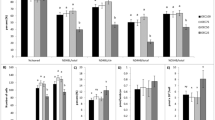Abstract
In a review written in 1987 entitled “Pioneering mammalian embryo culture,” John Biggers (The mammalian preimplantation embryo: regulation of growth and differentiation in vitro, Plenum Press, New York, 1987) summarized the history of early preimplantation embryo culture as follows “The culture of early mammalian embryos has been studied predominantly in two species: the rabbit and the mouse. Up to 1949, the rabbit was used almost exclusively, with media composed of ill-defined biological fluids. After this time, techniques for the culture of preimplantation mouse embryos rapidly developed using simple, defined media with relatively few components… In the 1960s, there was renewed interest in the culture of early rabbit embryos and a marked difference in the nutritional requirements of the two species was found.” This chapter describes the history of the development of the semi-defined medium that stimulated this “renewed interest” referred to above and includes some of the initial difficulties in getting the work published. The phrase “semi-defined medium” is understood here to mean a defined medium (all of whose components are chemically known) supplemented with an undefined component such as albumin.
Access this chapter
Tax calculation will be finalised at checkout
Purchases are for personal use only
Similar content being viewed by others
References
Brinster RL (1963) A method for in vitro cultivation of mouse ova from two-cell to blastocyst. Exp Cell Res 32:205–208
Kane MT (2018) Culture of preimplantation rabbit embryos. Methods Mol Biol in press 2006
Onuma H, Maurer RR, Foote RH (1968) In-vitro culture of rabbit ova from early cleavage stages to the blastocyst stage. J Reprod Fertil 16:491–493
Krishnan RS, Daniel JC Jr (1967) “Blastokinin”: inducer and regulator of blastocyst development in the rabbit uterus. Science 158:490–492
Ham RG (1963) An improved nutrient solution for diploid Chinese hamster and human cell lines. Exp Cell Res 29:515–526
Beier HM (1968) Uteroglobin: a hormone-sensitive endometrial protein involved in blastocyst development. Biochim Biophys Acta 160:289–291
Kane MT, Foote RH (1971) Factors affecting blastocyst expansion of rabbit zygotes and young embryos in defined media. Biol Reprod 4:41–47
Kane MT (1983) Variability in different lots of commercial bovine serum albumin affects both cell multiplication and hatching of rabbit blastocysts in culture. J Reprod Fertil 69:555–558
Kane MT, Foote RH (1970) Culture of two-and four-cell rabbit embryos to the expanding blastocyst stage in synthetic media. Proc Soc Exp Biol Med 133:921–925
Naglee DL, Maurer RR, Foote RH (1969) Effect of osmolarity on in vitro development of rabbit embryos in a chemically defined medium. Exp Cell Res 58:331–333
Kane MT (1972) Energy substrates and culture of single-cell rabbit ova to blastocysts. Nature 238:468–469
Kane MT (1987) Minimal nutrient requirements for culture of one-cell rabbit embryos. Biol Reprod 37:775–778
Fahy MM, Kane MT (1993) Incorporation of [3H]inositol into phosphoinositides and inositol phosphates by rabbit blastocysts. Mol Reprod Dev 34:391–395
Cockroft DL (1991) Vitamin deficiencies and neural-tube defects: human and animal studies. Hum Reprod 6:148–157
Gray CW, Morgan PM, Kane MT (1992) Purification of an embryotrophic factor from commercial bovine serum albumin and its identification as citrate. J Reprod Fertil 94:471–480
Biggers JD (1987) Pioneering mammalian embryo culture. In: Bavister BD (ed) The mammalian preimplantation embryo: regulation of growth and differentiation in vitro. Plenum Press, New York, pp 1–22
Adams CE (1962) Studies on prenatal mortality in the rabbit, Oryctolagus cuniculus: the effect of transferring varying numbers of eggs. J Endocrinol 24:471–490
Fischer B, Chavatte-Palmer P, Viebahn C, Navarrete Santos A, Duranthon V (2012) Rabbit as a reproductive model for human health. Reproduction 144:1–10. https://doi.org/10.1530/REP-12-0091
Daniel JC Jr, Krishnan RS (1967) Amino acid requirements for growth of the rabbit blastocyst in vitro. J Cell Physiol 70:155–160
Hertig AT, Rock J, Adams EC, Menkin MC (1959) Thirty-four fertilized human ova, good, bad and indifferent, recovered from 210 women of known fertility; a study of biologic wastage in early human pregnancy. Pediatrics 23:202–211
Morbeck DE, Krisher RL, Herrick JR, Baumann NA, Matern D, Moyer T (2014) Composition of commercial media used for human embryo culture. Fertil Steril 102:759–766.e759. https://doi.org/10.1016/j.fertnstert.2014.05.043
Morbeck DE, Baumann NA, Oglesbee D (2017) Composition of single-step media used for human embryo culture. Fertil Steril 107:1055–1060.e1051. https://doi.org/10.1016/j.fertnstert.2017.01.007
Reeds PJ (2000) Dispensable and indispensable amino acids for humans. J Nutr 130:1835S–1840S. https://doi.org/10.1093/jn/130.7.1835S
Kane MT, Bavister BD (1988) Vitamin requirements for development of eight-cell hamster embryos to hatching blastocysts in vitro. Biol Reprod 39:1137–1143
McKiernan SH, Bavister BD (2000) Culture of one-cell hamster embryos with water soluble vitamins: pantothenate stimulates blastocyst production. Hum Reprod 15:157–164. https://doi.org/10.1093/humrep/15.1.157
Cockroft DL (1988) Changes with gestational age in the nutritional requirements of postimplantation rat embryos in culture. Teratology 38:281–290. https://doi.org/10.1002/tera.1420380312
Gregoire AT, Gongsakdi D, Rakoff AE (1962) The presence of inositol in genital tract secretions of the female rabbit. Fertil Steril 13:432–435
Lewin LM, Yannai Y, Melmed S, Weiss M (1982) Myo-inositol in the reproductive tract of the female rat. Int J Biochem 14:147–150
Kermack AJ, Finn-Sell S, Cheong YC, Brook N, Eckert JJ, Macklon NS, Houghton FD (2015) Amino acid composition of human uterine fluid: association with age, lifestyle and gynaecological pathology. Hum Reprod (Oxford, England) 30:917–924. https://doi.org/10.1093/humrep/dev008
Acknowledgments
Thanks are due to Professor H.J. Leese, Centre for Cardiovascular and Metabolic Research (CCMR), Hull York Medical School (HYMS), Kingston upon Hull, UK for very helpful criticism of the manuscript.
Author information
Authors and Affiliations
Corresponding author
Editor information
Editors and Affiliations
Rights and permissions
Copyright information
© 2019 Springer Science+Business Media, LLC, part of Springer Nature
About this protocol
Cite this protocol
Kane, M.T. (2019). Historical Note: Lessons Learned from Developing the First Semi-Defined Medium for Culture of One-Cell Rabbit Embryos to Expanding Blastocysts. In: Herrick, J. (eds) Comparative Embryo Culture. Methods in Molecular Biology, vol 2006. Humana, New York, NY. https://doi.org/10.1007/978-1-4939-9566-0_1
Download citation
DOI: https://doi.org/10.1007/978-1-4939-9566-0_1
Published:
Publisher Name: Humana, New York, NY
Print ISBN: 978-1-4939-9565-3
Online ISBN: 978-1-4939-9566-0
eBook Packages: Springer Protocols



